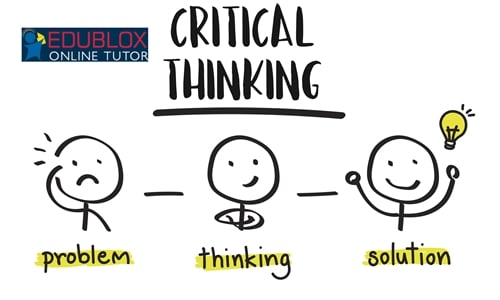Cancer Awareness
 Cancer Awareness
Cancer Awareness
According to the American Cancer Society (2018), cancer is a significant health issue that has a high mortality rate such that per 6 reported cases of death, there is one death case of cancer. Risk factors like tobacco use, excess body weight, immune conditions, and inherited genetic mutations may promote the growth of cancerous cells. However, early detection through screening tests like mammography can help in reducing cancer-causing infections. Ethnic minorities, however, fail to have adequate cancer awareness due to emotional barriers like worry and mistrust with health practitioners (Knight, 2012). Inadequate cancer awareness is, therefore, an issue of great concern and this needs drastic attention since the cases of cancers are higher mostly among the ethnic minorities.
Background Information
Statistics show that there is low attendance of screening of cancers like cervical and breast cancer among women between 24 and 65 years in minority groups (Knight, 2012). Such women are unmarried; they have low educational qualifications and low socioeconomic status. Among the perceived barriers to screening such as worry, a dislike of going for the tests, inconvenient appointments; the lack of knowledge concerning the importance of screening is a significant problem. This is quite unfortunate considering that there are health organizations and advocates of health whose role is ensuring that they provide educational campaigns about health issues like cancer. Another challenge is that of language barriers which affect the level of understanding among these groups such as the Somali women, Asians, and Black Africans. Still, apart from the women, ethnic minority men also lack awareness about the importance of screening. For instance, Knight (2012) holds that incidences of prostate cancer in men are quite common, and these incidences are three times higher among African men as well as African-Caribbean men. Hence, when compared to White men, there is a severe lack of awareness about tests like prostate-specific antigen (PSA) among the men in minority communities.
For quality, personalized, and original answers, please order here.
Some religious and cultural myths in these communities also prevent the populations from acquiring relevant information about cancer since it is believed that the disease is a death sentence. Initiatives like The National Awareness and Early Diagnosis Initiative (NAEDI) in the United Kingdom reveal that the negative attitudes among the ethnic minority populations also influence poor knowledge about the disease. Hence, due to the negative beliefs; this prevents the people from attending forums and health services where they can learn more about cancer. It is quite unfortunate that based on these presented real-life issues; there are high death rates and shortest survival among the African Americans in most of the cancers. Another group is the Hispanics which is also at a high risk of developing cancer connected with infections that affect the liver, stomach and uterine cervix. On another note, the lack of awareness on issues like health insurance tends to create a financial burden to those affected thus creating a low chance of survival. Still, factors like poverty in these communities due to unemployment prevent the populations from attaining an education that can aid in increasing their awareness about maintaining healthy lifestyles (Knight, 2012). Therefore, with such factors, it can be quite challenging to convince some of these groups about lifestyle changes that can help in preventing cancer. For instance, the Latinos believe that weightiness is a highly preferable aspect in their culture yet this contributes to obesity which is a risk factor for cancer. Altogether, based on the underlying issues, it is evident that several factors make the ethnic minority groups lack adequate knowledge about cancer prevention. Unfortunately, this prevents them from taking the right measures like going for screening or getting immediate treatment.
The Proposed Solution to The Addressed Problem
Increasing cancer awareness should be a priority among the ethnic minority groups since this can reduce the mortality rate and increase cancer survivors. Low cancer awareness on factors like the knowledge and beliefs on cancer symptoms, the risk factors, screening strategies, effective treatment approaches increase delays of a cancer diagnosis. Therefore, having public campaigns on cancer awareness would be an effective solution to the presented problem. Based on a study conducted by Austoker et al., (2009) the campaigns have been linked with improving cancer awareness and encouraging these communities to go for early screening. On this note, further effectiveness of the awareness drives could be achieved by having language interpreters who understand the dialect and cultural beliefs of people from these communities. Still, the initiatives should have tailored printed information that meets the unique needs of the different ethnic minority groups since general information could have less impact. In the same study, Austoker et al. hold that tailored information promotes active engagement on cancer awareness by 11% when compared with general information at 4% or not information at all. In this case, such tailored information helps in modifying the people’s attitudes by motivating them to pay attention and seek help after the forum. Still, the programs would encourage the minorities the essence of maintaining a healthy weight, having regular exercises, and also enhance their knowledge about other risk factors of cancer.
Further, computer-interactive programs or e-health interventions would also aid in increasing cancer awareness in these populations. Technology has provided significant channels for interacting with people from all walks of life. Therefore, with the use of smartphones and other technology-related devices, this would provide adequate information and screening programs for targeted populations. For instance, specific drives have been developed to raise screening awareness on colorectal cancer where health care providers integrate e-health strategies for enhanced collaboration between them and the individuals. According to Slev et al., (2016), these screening programs have also been implemented for breast cancer where the internet-based initiatives have encouraged healthcare participation. This has been successful since the programs have electronic symptom reporting mechanisms and consultation support. Still, with this intervention, it would promote the sharing of screening information through publicly accessible websites sponsored by significant organizations. Such organizations include but not limited to the Centers for Disease Control and Prevention (CDC), National Cancer Institute (NCI) and International Agency for Research on Cancer (IARC). It is also important to note that the e-health intervention for increasing cancer awareness is highly recommendable considering that some of the minorities have mistrust issues with health professionals. Hence, with the e-health support, it does not require individuals to have face-to-face contact thus encouraging minorities like the Somali women to gain confidence when airing their issues with health providers in the virtual networks. Slev et al., (2016) holds that the e-health strategy for creating awareness has positive effects. It acts as a complement for traditional professional support, and it also reduces some healthcare costs like the consultation charges.
For quality, personalized, and original answers, please order here.
It also solves the issue of inconvenient appointments which saves on time this being a practical barrier that prevents men from going for screening. Hence, initiatives that support these groups have a high chance of increasing cancer awareness and even promote the enactment of policies for minorities that cannot afford screening and cancer treatment. Generally, what the ethnic minorities need is social support since these are groups that are looked down upon by the majority in society. With the two proposed solutions, follow up plans using reminders in emails or text would motivate individuals to take action by going for appropriate screening. Hence, this would require a proper registration process of individuals attending the initiatives to gather their contact information to enhance communication and follow up.
Opposing Views Concerning the Suggested Solutions
Although raising cancer awareness through campaigns is a significant approach, critics have conflicting opinions on such initiatives. According to Christiano and Neimand (2017), there are many awareness campaigns not only about cancer but also other health issues. They further argue that the activists of these campaigns fail to act in ensuring that after raising the awareness, the targeted populations go for the right screenings that are relevant according to their age or gender. Therefore, Christiano and Neimand believe that awareness campaigns are likely to fail if the advocates of health lack to incorporate appropriately crafted messages that call for action and behavioral change. Further, due to the rise of security threats on the internet, an issue of concern in the opposing view is related to the e-health intervention for raising awareness by encouraging cancer screening. Critics argue that the security of the information transmitted through the networks could be at risk of ending up in the wrong hands of hackers. Generally, it is believed that systems lacking security measures that prevent data theft could jeopardize e-health intervention.
Conclusion
In conclusion, regardless of the raised opposing views, the public campaigns that target minorities incorporated with tailored information, as well as e-health interventions, would be useful in raising cancer awareness. Sensitizing the essence of encrypting the conversations in the networks would prevent data threat. Data security is an essential component that has to be enhanced without question between patients and healthcare professionals. Generally, the initiatives would motivate change and the perceptions of the ethnic minorities concerning the essence of cancer screening and prevention measures.
Reference
American Cancer Society, (2018). Global Cancer Facts and Figures 4th Edition
Austoker, J., Bankhead, C., Forbes, L. J., Atkins, L., Martin, F., Robb, K., … & Ramirez, A. J. (2009). Interventions to promote cancer awareness and early presentation: systematic review. British journal of cancer, 101(S2), S31.
Christiano, A., & Neimand, A. (2017). Stop raising awareness already. Stanf Soc Innov Rev. Spring, 2017.
Knight, P. L. (2012). Raising cancer awareness in minority ethnic groups. Nursing times, 108(38), 17-19.
Slev, V. N., Mistiaen, P., Pasman, H. R. W., Verdonck-de Leeuw, I. M., van Uden-Kraan, C. F., & Francke, A. L. (2016). Effects of eHealth for patients and informal caregivers confronted with cancer: a meta-review. International journal of medical informatics, 87, 54-67.

 During human development, several milestones occur from childhood to adulthood. The milestones are marked by the cognitive, physical, and social, emotional growth processes, which are essential stages in an individual’s life. Various theorists such as Piaget and Erik Erickson came up with theories to describe the human developmental processes. By focusing on the biography of
During human development, several milestones occur from childhood to adulthood. The milestones are marked by the cognitive, physical, and social, emotional growth processes, which are essential stages in an individual’s life. Various theorists such as Piaget and Erik Erickson came up with theories to describe the human developmental processes. By focusing on the biography of  Using one of the lessons you developed in this course, create both content and critical thinking questions you could ask during the implementation of the lesson. The questions should be based on the standards and objectives within the lesson you selected.
Using one of the lessons you developed in this course, create both content and critical thinking questions you could ask during the implementation of the lesson. The questions should be based on the standards and objectives within the lesson you selected. The US employment law is highly focused on addressing all forms of discrimination by the employer. Discrimination of persons with disabilities is one of the most critical areas of concern in the US discrimination laws. The law is grounded on humanization of the persons with disabilities which involve designing the policies to reflect and expand their human potentials (Mackelprang, Salsgiver, & Salsgiver, 2016). The employment law is the aftermath of other national agendas that include quality education and specialized training programs (Francis, & Silvers, 2015). The Americans with Disabilities Act (1990) provide the guidelines needed to fulfill the agendas by the employers in all the sectors. The law focuses on ensuring that persons with disabilities are given equal opportunities to recruitment for a job if they have the skills needed to complete the task. The law calls for extra responsibility to the employers to include comfortable working conditions for them. The recruitment process, for instance, requires that the interview need to respond to the skills and abilities without reflecting on the disability (Barnes, 2014). The law also gives the employer an initiative to develop policies and workplace etiquette that recognizes and empower the disabled persons. This calls not for treating them as weak personnel’s in the company who require special environments but rather people with special abilities that can only be fulfilled through a highly specialized system. The Americans with Disabilities (Act) is a significant law that was championed by Senator Thomas Richard Harkins and signed into law by President Bush in 1990. The law has undergone other several amendments to enhance its effectiveness in the improvement of the well-being of persons with disabilities in the labor market (Heyer, 2017). This amendment includes the ADAAA (2008) that helped to clarify the law definition of disabilities distinguishing disabilities from impairments. The law is a set of rules and regulations that govern the response to persons with disabilities in various facilities, both private and public.
The US employment law is highly focused on addressing all forms of discrimination by the employer. Discrimination of persons with disabilities is one of the most critical areas of concern in the US discrimination laws. The law is grounded on humanization of the persons with disabilities which involve designing the policies to reflect and expand their human potentials (Mackelprang, Salsgiver, & Salsgiver, 2016). The employment law is the aftermath of other national agendas that include quality education and specialized training programs (Francis, & Silvers, 2015). The Americans with Disabilities Act (1990) provide the guidelines needed to fulfill the agendas by the employers in all the sectors. The law focuses on ensuring that persons with disabilities are given equal opportunities to recruitment for a job if they have the skills needed to complete the task. The law calls for extra responsibility to the employers to include comfortable working conditions for them. The recruitment process, for instance, requires that the interview need to respond to the skills and abilities without reflecting on the disability (Barnes, 2014). The law also gives the employer an initiative to develop policies and workplace etiquette that recognizes and empower the disabled persons. This calls not for treating them as weak personnel’s in the company who require special environments but rather people with special abilities that can only be fulfilled through a highly specialized system. The Americans with Disabilities (Act) is a significant law that was championed by Senator Thomas Richard Harkins and signed into law by President Bush in 1990. The law has undergone other several amendments to enhance its effectiveness in the improvement of the well-being of persons with disabilities in the labor market (Heyer, 2017). This amendment includes the ADAAA (2008) that helped to clarify the law definition of disabilities distinguishing disabilities from impairments. The law is a set of rules and regulations that govern the response to persons with disabilities in various facilities, both private and public.